Events
New office to open in Jammu and Kashmir: ASSOCHAM

Describing the decision to abrogate Article 370 of the Constitution as historic and leading towards the One Nation One Constitution, ASSOCHAM President Mr B K Goenka said the bold move by the government under the leadership of Hon’ble Prime Minister Shri Narendra Modi would strengthen India’s sovereignty and pave the way for peace and development in Jammu and Kashmir.
Mr.Goenka said the restructuring of the paradise state into Union Territories will weave them more intricately with the national fabric. He said the bold step would open up the flow of investments into the sectors like tourism, real estate, handicrafts, horticulture, and food processing, among others. The multiplier effect would enhance employment opportunities and contribute to India’s all-round prosperity. We congratulate the MODI government for this historic move and to participate in the proposed economic development agenda, ASSOCHAM has decided to set up a regional office in J & K.
About ASSOCHAM:
ASSOCHAM initiated its endeavor of value creation for the Indian industry in 1920. It was established by promoter Chambers, representing all regions of India. Having in its fold over 400 Chambers and Trade Associations, and serving over 4.5 lakh members across India. ASSOCHAM has emerged as the fountainhead of Knowledge for the Indian industry, which is all set to redefine the dynamics of growth and development in the Knowledge-Based Economy. More information available on www.assocham.org
Art
Cultural Festival & Face of Runway 2025 – A Grand Celebration of Talent and Tradition
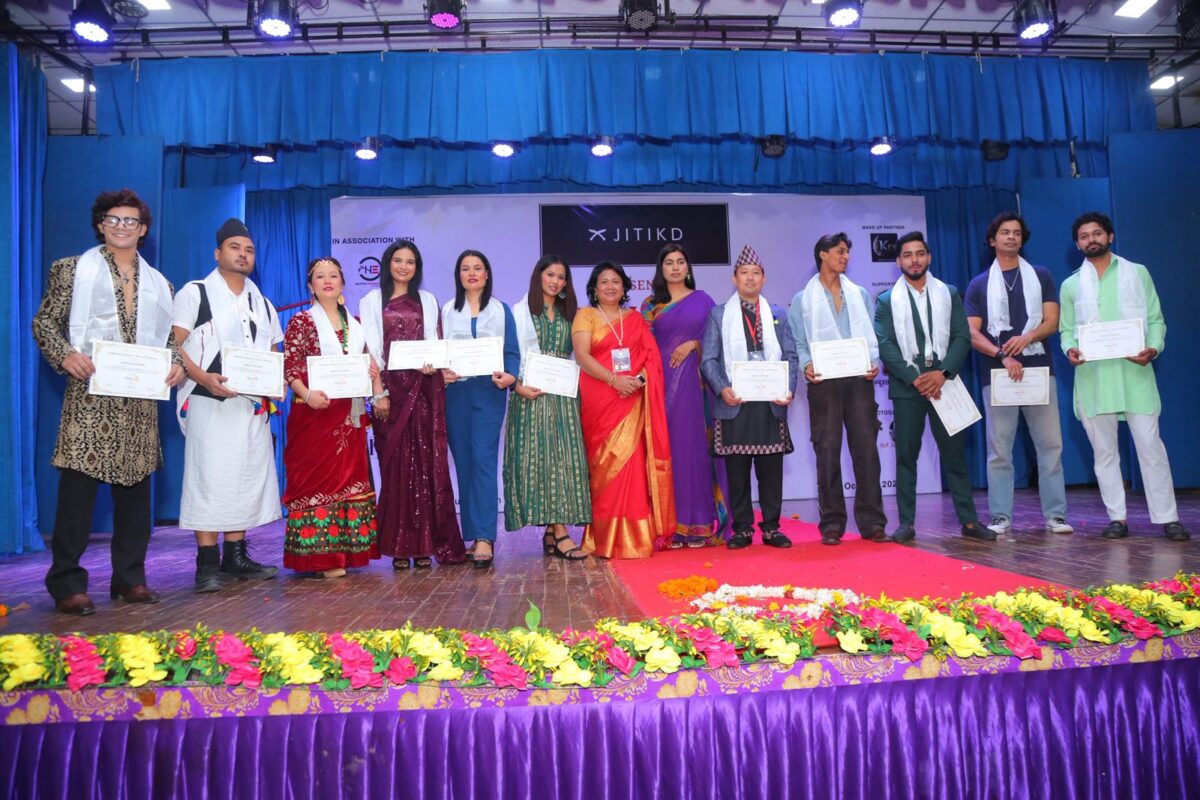
The Cultural Festival & Face of Runway (CFFR) was successfully held on 18th October 2025 at the Lajpat Bhawan Auditorium, marking yet another vibrant celebration of art, culture, and fashion.
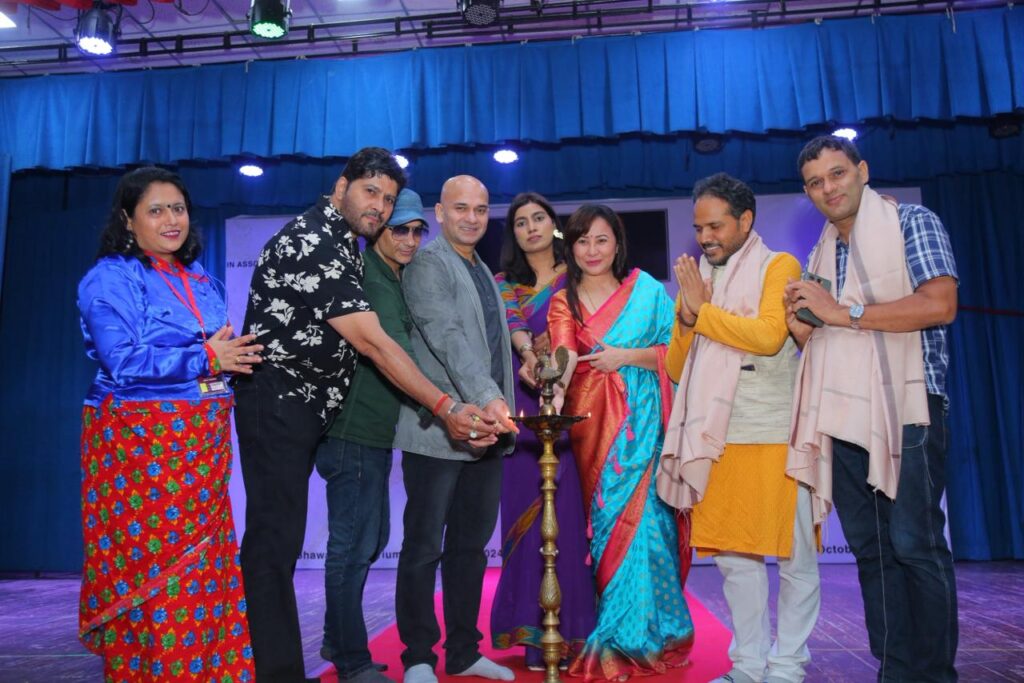
The event was graced by distinguished personalities, including Chief Guest Munish Tamang, VIP Guests Amit R. Agarwal, Junaid Husain Khan, and Mohan Karki, Celebrity Guest Dr. Sunil Parashar, and Special Guest Rajni Subba.



Organized by Jitika Devi, the festival beautifully combined cultural performances with a glamorous runway show, showcasing diverse talent from across the region.

Speaking about the event, Jitika Devi shared,
“I wanted to give a perfect Deepavali gift to various talents — so that, like traditional Deepavali lamps, they glitter and illuminate the world of arts and culture. To this effect, I launched this Cultural Festival and Face of Runway, which is now celebrating its 2nd edition.”
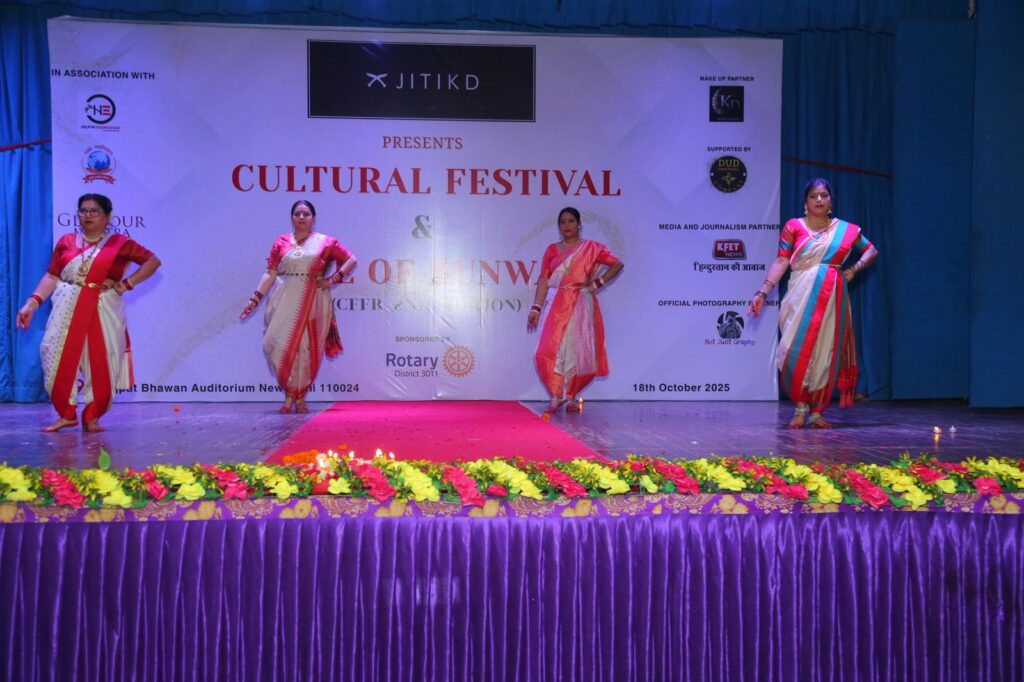
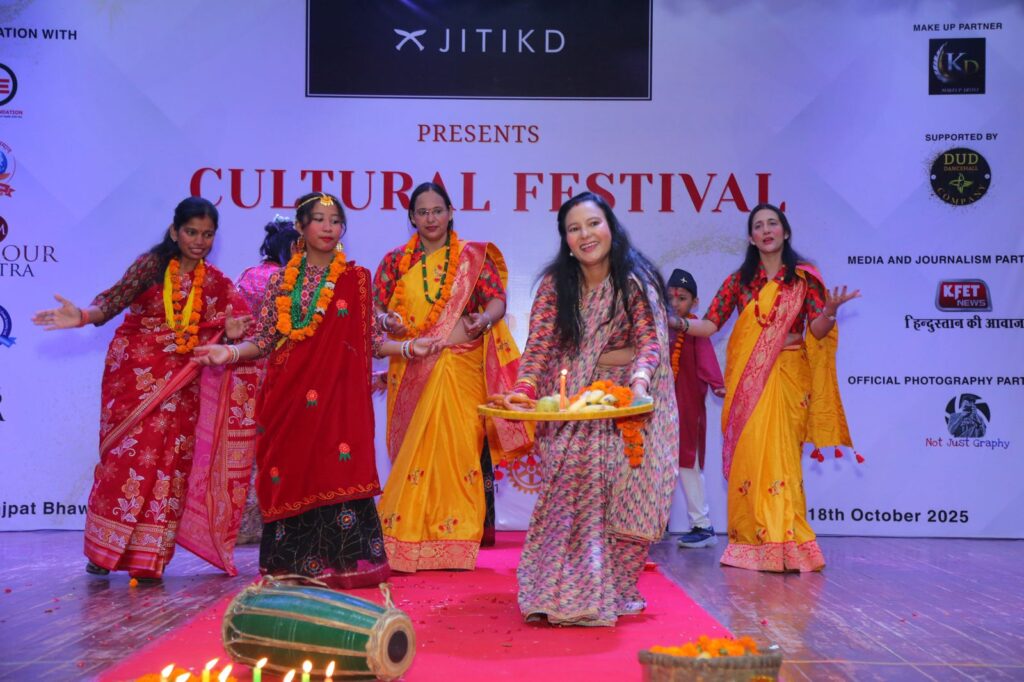
Jitika, who launched her clothing brand Jitikd in 2022, announced that from 2025 onwards, she plans to organize CFFR every year. This year’s edition, themed around Dashain Tihar, holds special significance as it promotes rich cultural heritage while offering a perfect platform for aspiring young artists and models to shine.
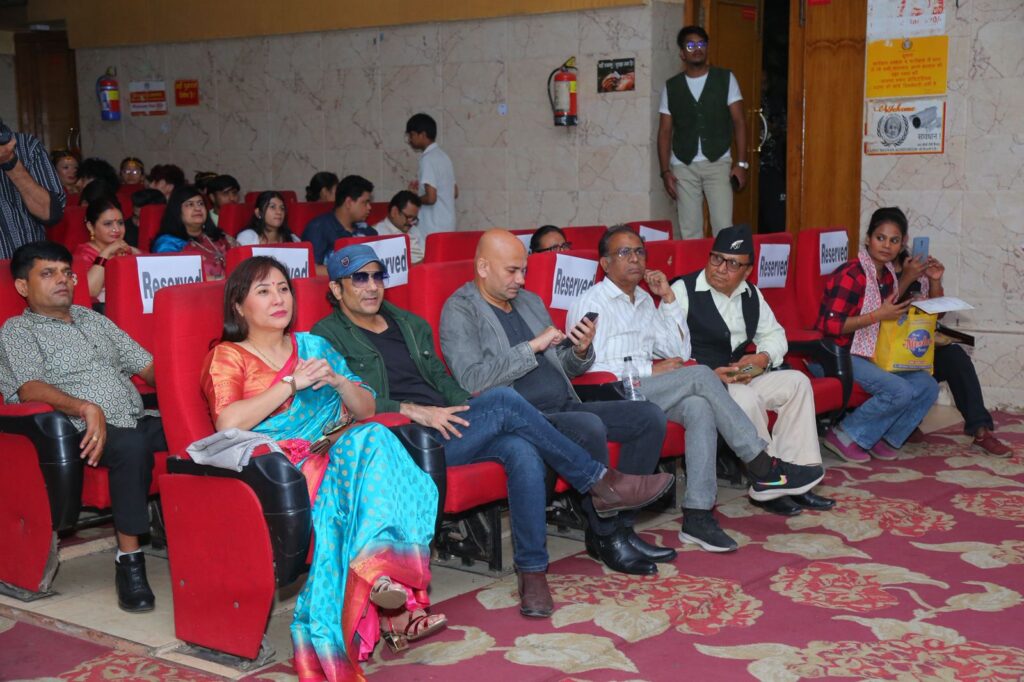
Adding to the glamour of the evening, Glamour Mantra partnered as the official media partner, capturing the essence of the event and amplifying its reach to a wider audience.
The Cultural Festival & Face of Runway 2025 truly lived up to its promise — blending culture, creativity, and celebration under one roof.
Events
Spykar’s Palladium store turns into party hub for ‘Daur Apna Hai’ Nite

Spykar’s Palladium store turns into party hub for ‘Daur Apna Hai’ Nite – rappers, celebrities rock the dance floor
Rappers Wicked Sunny, Kaam Bhaari, Sammohit, Mohit Hiranandani, Shanaya Makani and over 100 top creators come together to celebrate youth, music, culture and denim
Mumbai, October 13, 2025: This weekend, Spykar turned its Palladium store into a party hub, hosting an in-store live performance with rapperWicked Sunny. The star-studded evening hosted by Mohit Hiranandani saw rappers Kaam Bhaari, Sammohit along with actors like Prabhat Chaudhary, Shanaya Makani, and over 100 top digital creators and lifestyle influencers who came dressed in their boldest fits.
Daur Apna Hai, Spykar’s latest campaign, is a celebration of India’s young and vibrant spirit, confident, creative, and unapologetically original. The campaign launched with a rap anthem featuring Wicked Sunny, Dharmik, and the Vixens Crew, capturing the grit and ambition of today’s youth. Echoing Spykar’s belief that this is India’s time to shine, the anthem has become a cultural statement, uniting music and fashion as powerful forms of self-expression.
“What we witnessed was more than a performance, it was a movement,” said Sanjay Vakharia, CEO, Spykar. “Having a banger and high-octane party inside a retail store just shows how powerful India’s youth culture truly is when music and fashion unite. Spykar has always represented that young and restless spirit.”
The event marked a cultural moment where music, fashion, and youth expression collided, as fans poured in to experience Daur Apna Hai, Spykar’s viral anthem that has become the new voice of hustle and individuality. The evening also welcomed winners of Spykar’s Instagram contest, who earned their way to this once-in-a-lifetime experience.
The Spykar Palladium in-store concert set a new benchmark for experiential retail in India, proving that a denim store can be more than just a place to shop, it can be a stage for self-expression. Amid flashing denim walls and a crowd that spilled beyond the store, Wicked Sunny owned the stage with his infectious energy, delivering an unforgettable performance that had every attendee vibing and capturing moments for the ’gram.
Events
𝗨𝘁𝘁𝗮𝗿𝗮 𝗧𝗮𝗹𝗮𝗽𝗮𝘁𝗿𝗮 Wins 𝗕𝗲𝘀𝘁 𝗘𝗻𝘁𝗿𝗲𝗽𝗿𝗲𝗻𝗲𝘂𝗿 𝗔𝘄𝗮𝗿𝗱 at the 𝗛𝗲𝗿 𝗥𝗶𝘀𝗶𝗻𝗴 𝗔𝘄𝗮𝗿𝗱𝘀 𝟮𝟬𝟮𝟱

Mumbai, 16th September 2025: Uttara Talapatra, Founder of Magical Blends and a certified Skincare Coach, has been honoured with the Best Entrepreneur Award at the prestigious Her Rising Awards 2025, held on 13th September at Four Seasons, Mumbai.

The Her Rising Awards celebrate women achievers across industries who have demonstrated excellence, risen as leaders in their fields, and inspired countless others on their career journeys. Organised by HerKey, India’s largest AI-powered platform for women’s career growth, the initiative provides women with a safe and supportive community to pursue their aspirations and return to work after career breaks.

A trailblazer in the beauty and personal care space, Uttara has turned vision into action by building impactful businesses and shaping the ecosystem with innovation and purpose. With nearly two decades of experience across leading organisations such as L’Oréal, Unilever, and Raymond Consumer Care, she brought deep expertise in beauty and D2C business when she launched Magical Blends in 2024. In just a year, the brand has already secured a patented skincare regime, setting new benchmarks in a highly competitive industry.
Highlighting her win as just the beginning of a larger journey, Uttara shares, “My association with HerKey has been an extremely positive one over the last six months. What started as a small conversation about how to best care for one’s skin, quickly morphed into a much larger discussion about self-care, building confidence and making one’s mark in the workforce as well as starting as an entrepreneur.”
She further added, “It has been a pleasure to interact with the diverse members on the panel, and of course with the HerKey team itself, which is unreservedly supportive. I hope we can continue to collaborate on this diverse platform and continue to help other women reach their career aspirations. Thank you so much to the HerKey team for this award, it has been an absolute honour!”
Uttara’s recognition at the Her Rising Awards 2025 underscores her leadership, creativity, and determination to build a brand rooted in authenticity, efficacy, and expertise — inspiring the next generation of women entrepreneurs.

 Celebrities2 years ago
Celebrities2 years agoVOGUE EYEWEAR UNVEILS ‘KEEP PLAYING’, AN EFFERVESCENT CAMPAIGN WITH BRAND AMBASSADOR

 Events7 years ago
Events7 years agoVandy Mehra & Dr. Sanjana Jon hosted a fashionable evening

 Health & Beauty1 year ago
Health & Beauty1 year agoThe Face Shop Unveils the Vitamin Lip Sleeping Mask: A Revolution in Lip Care

 Business8 years ago
Business8 years agoUber and Lyft are finally available in all of New York State

 Lifestyle10 months ago
Lifestyle10 months agoAza Fashions Launches Flagship Store in Dhan Mill, New Delhi

 Celebrities2 years ago
Celebrities2 years agoAppu gives meaningful message in country’s first 4K animated

 Health & Beauty2 years ago
Health & Beauty2 years agoSmooth skin forever? Laser Hair Removal truth

 Health & Beauty1 year ago
Health & Beauty1 year agoBaby Forest Ayurveda opens new brick and mortar store in Noida































